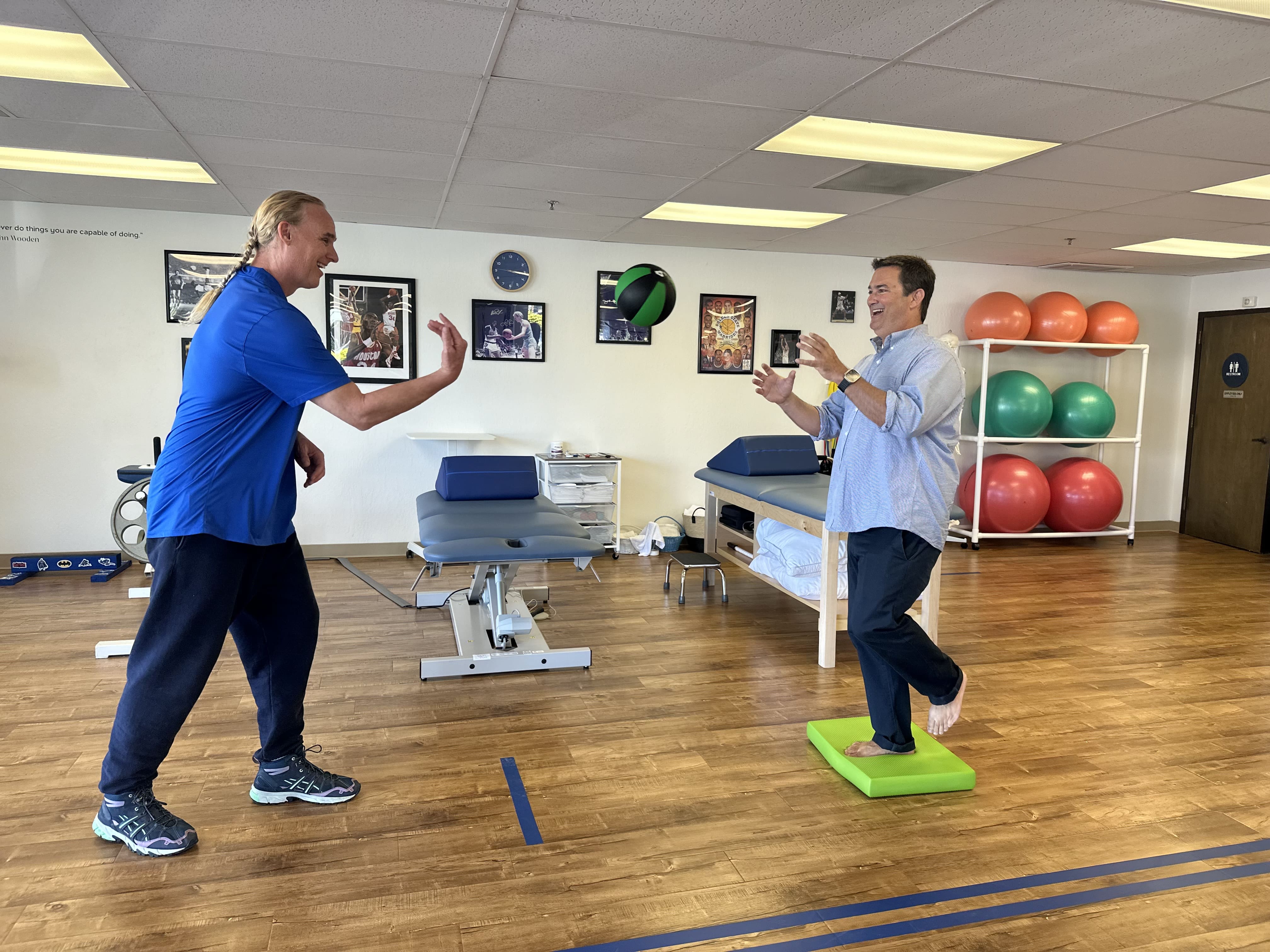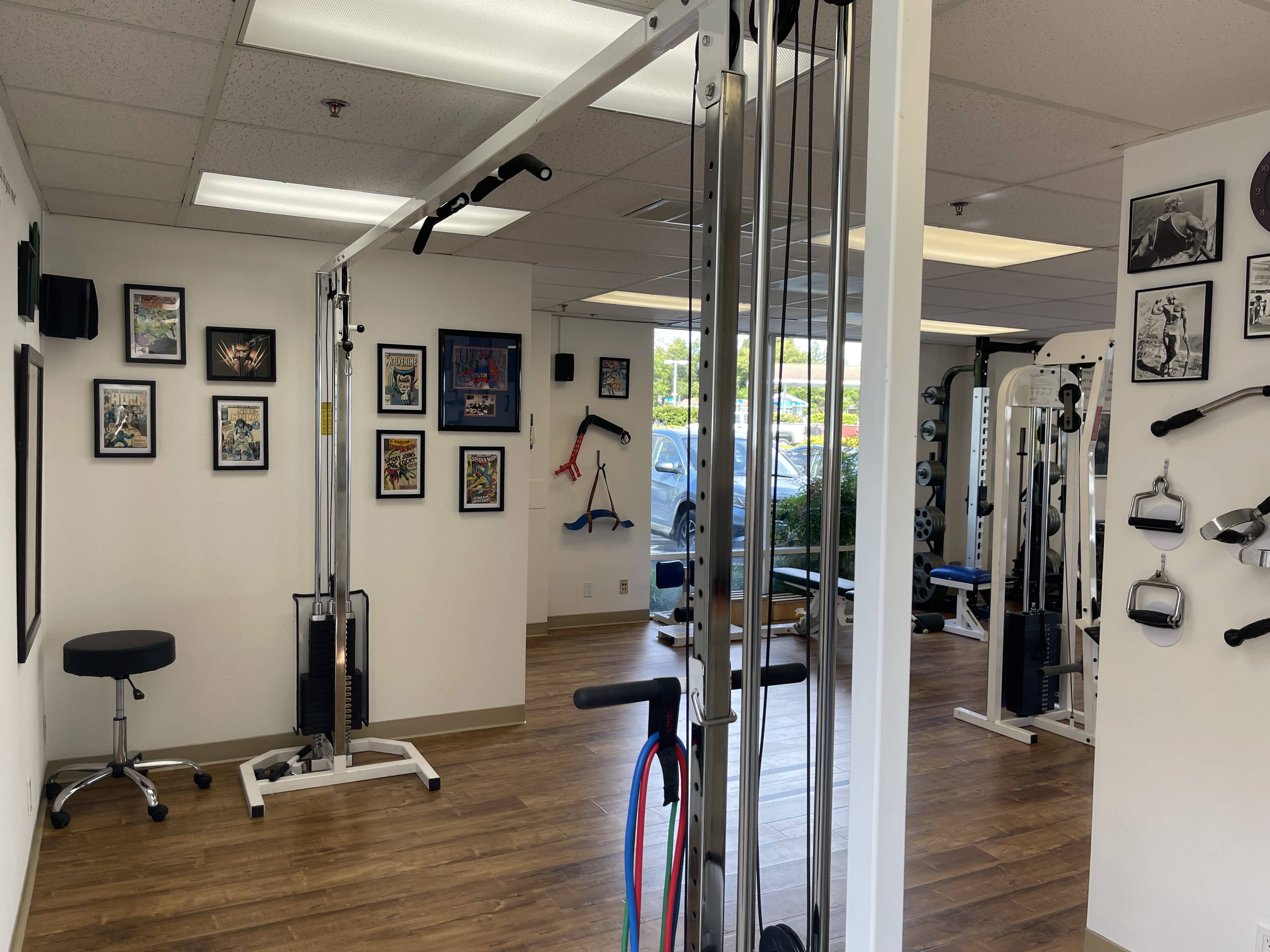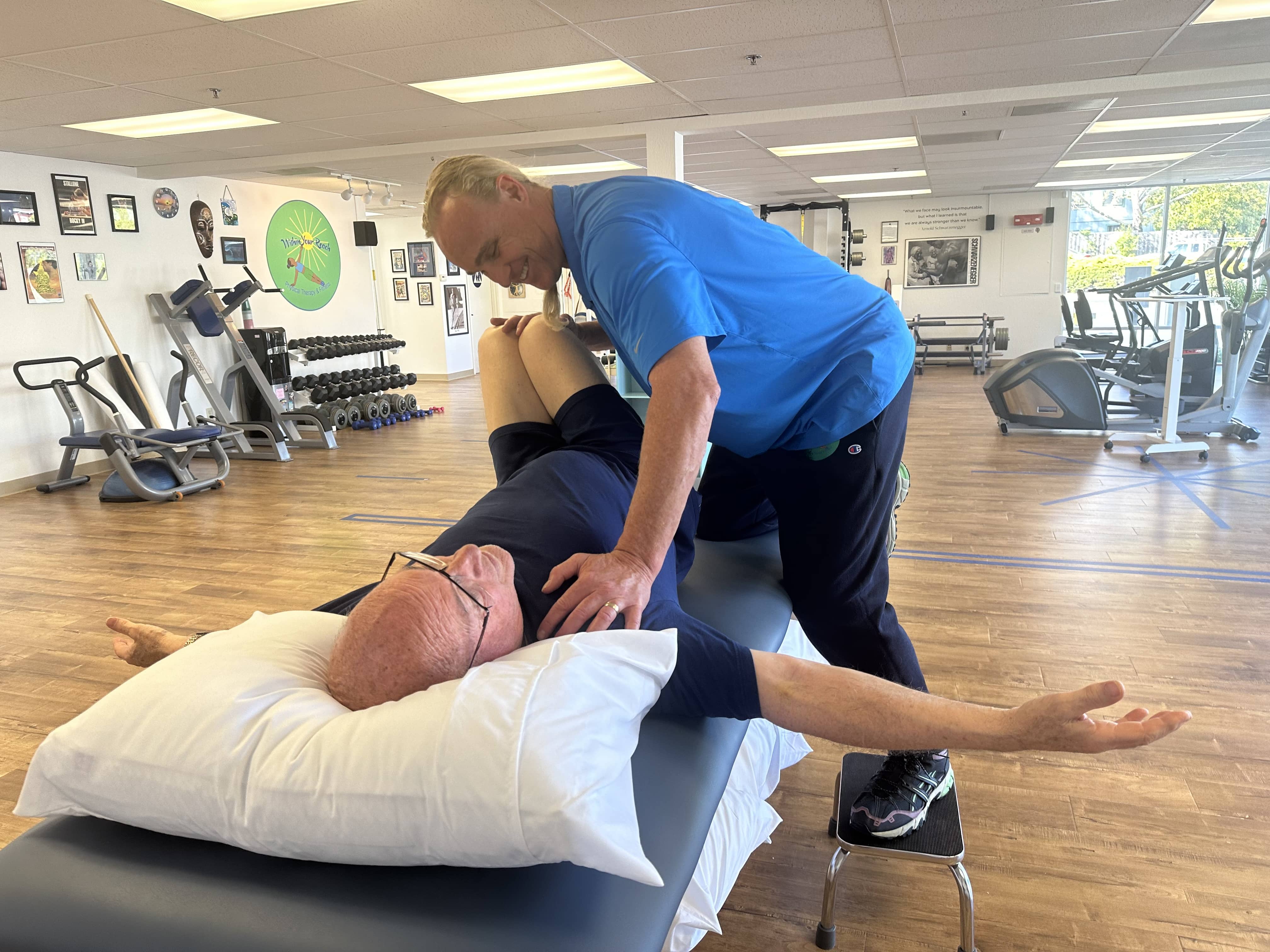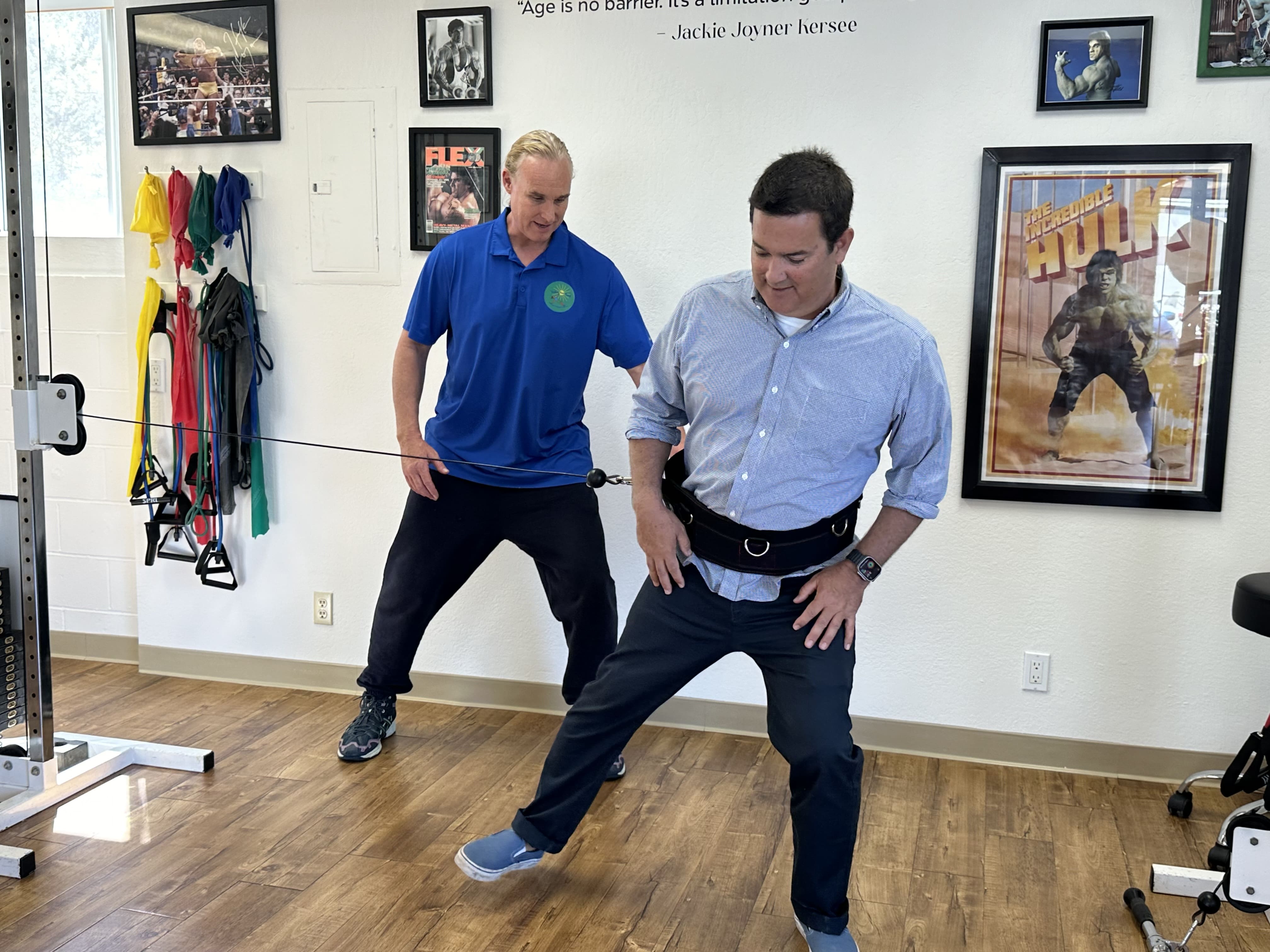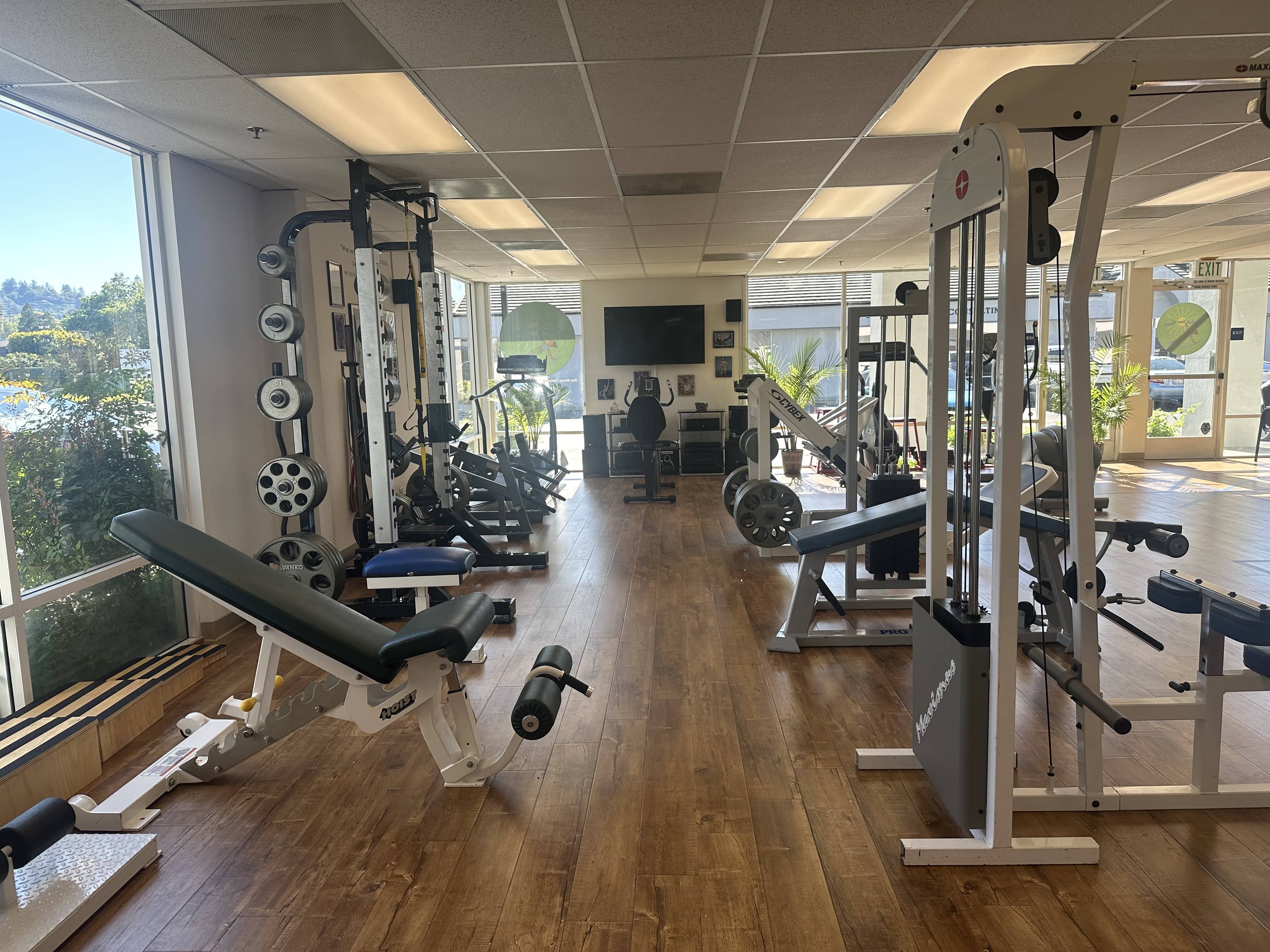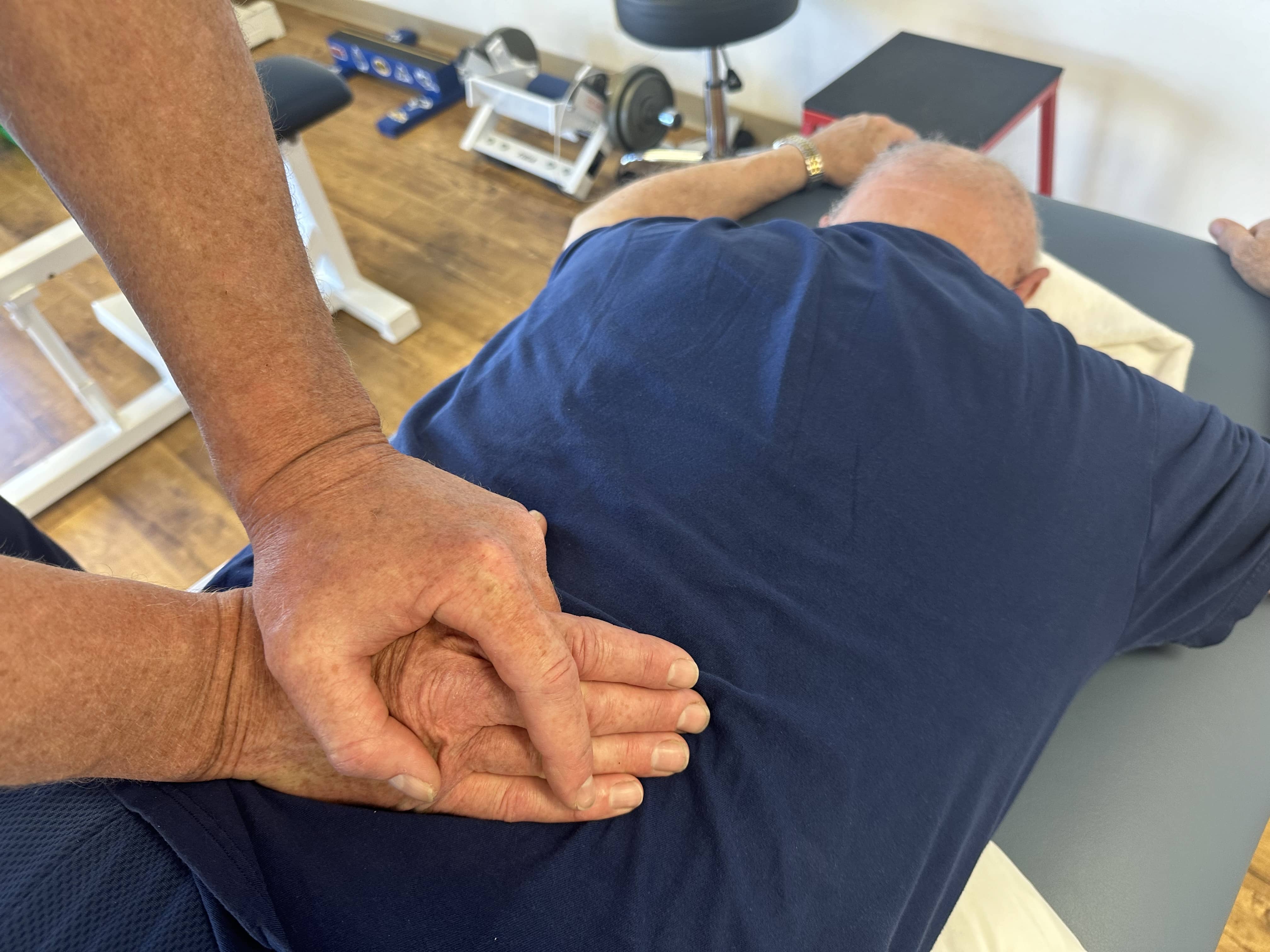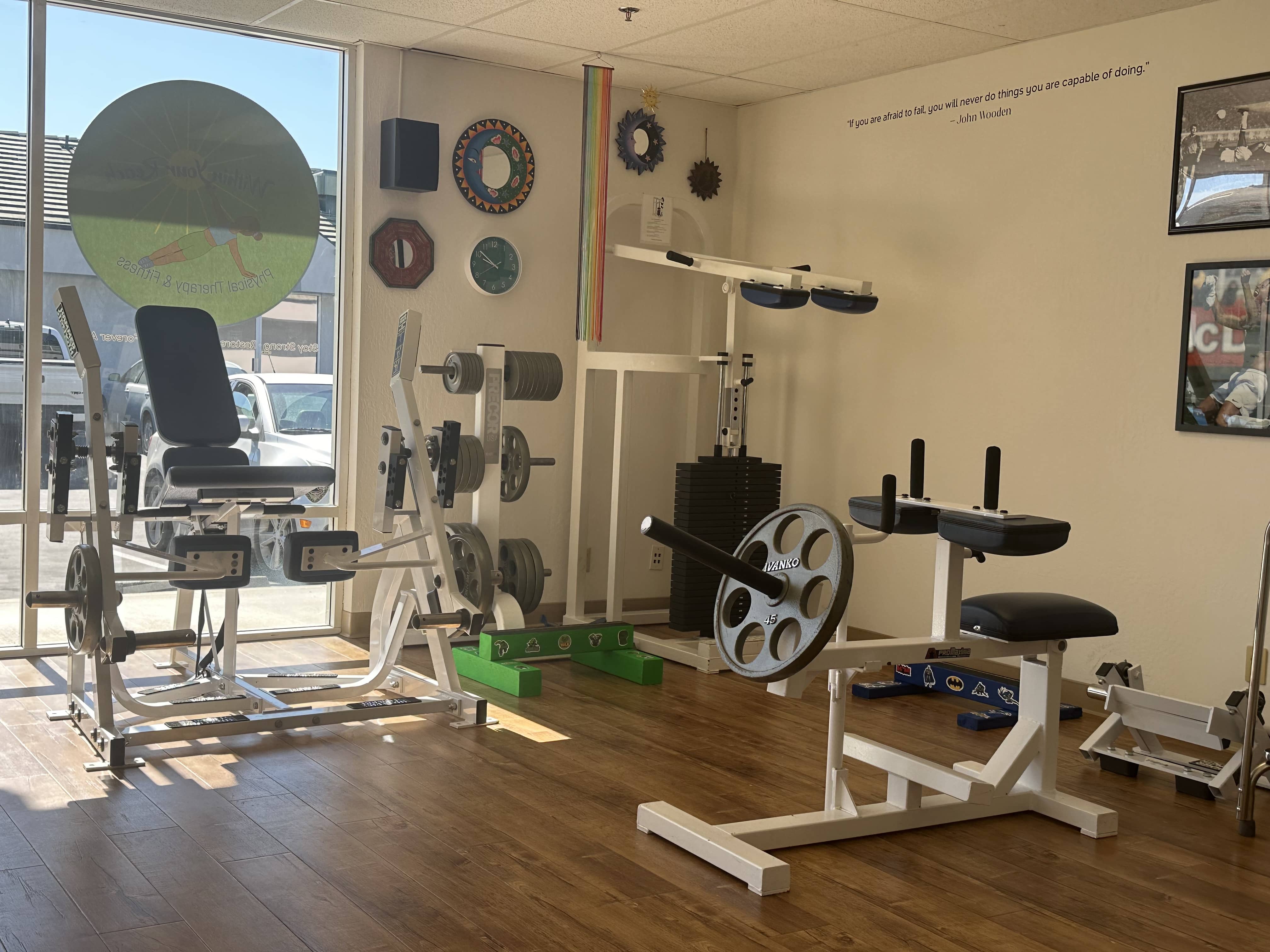Postural Training / Re-education
Physical Therapy
Do you have trouble turning your head to look behind you in the car?
Does your shoulder constantly ache without ever getting any real relief?
Do your heels hurt when you first walk in the morning?
Does your lower back ache when you stand? When you sit? All the time?
If any of these questions apply to you, or you have any other nagging aches or pains, we are here to bring you relief.
Who We Are
Orthopedic Physical Therapy Clinic — We treat musculoskeletal orthopedic conditions including newly acquired or chronic pain in addition to post operative conditions. Your musculoskeletal system includes your bones, muscles, ligaments and tendons, joints, and connective tissue. We provide injury rehabilitation with a strong foundation in manual therapy and therapeutic exercise to reduce pain, weakness, swelling, stiffness, and immobility. Our goal is to help you recover with increased strength, flexibility, range of motion, mobility, and health.
People We Help
- Active Adults
- Seniors
- Patients With Parkinson's
- Athletes
- Parents
- Grandparents
- Teen Athletes
Conditions We Treat
Below are just some of the many conditions that we treat:
- Gait training
- Acute and chronic pain
- Balance improvement
- Movement, mobility, and gait improvement
- Neck and upper back pain, and tension headaches
- Low back pain
- Herniated disks
- Stenosis
- General Osteoarthritis or by region
- Sciatica
- Sacroiliac joint pain or dysfunction
- Plantar fasciitis / heel pain / other foot pain
- Knee pain
- Joint replacement pre-op / post-op care
- Tendon repair without surgery or pre-op / post-op care
- Hip pain
- Tendonitis by region
- Bursitis by region
- Wrist and elbow pain
- Carpel tunnel syndrome
- Golfer's and tennis elbow
- Shoulder pain and rotator cuff tears
- Frozen shoulder
- Closed fracture or ORIF fracture repair
- Ankle sprains
- Repetitive stress and overuse injuries
- Other musculoskeletal conditions
- Parkinson's
- Chronic fatigue syndrome
- Fibromyalgia
Getting Started
The first thing that we do at your initial appointment is to take a complete history of your injury/condition, perform a thorough full body physical therapy evaluation which includes an in-depth PT diagnosis, and address not only your specific problems, but the rest of your body as well. From there, we are able to design a personalized therapy plan of care with a timeline to help get you back to living your best life, pain free, without fear of injury. We provide an individualized exercise program during your session, as well as to do at home to aid your therapy.
Manual Therapy Techniques
We utilize a combination of the following manual therapy techniques specific to your condition(s) in order to decrease pain, increase range of motion, improve functional mobility, and increase flexibility:
Targeted Stretching: Physical therapist manual stretching that is focused on restricted muscle groups unique to each individual patient, using multiple stretching techniques.The many benefits include:
- Restored movement
- Improved joint range of motion
- Increased muscle flexibility, extensibility, and decreased musculotendinous stiffness
- Decreased pain
- Improved or regained functional movement capability
-
Decreased risk of injury in sports or daily life
Joint and spinal mobilizations / manipulations: A manual therapy technique that focuses on a specific joint, or region of your spine, to:- Reduce pain and sensitivity, inflammation, and pressure within a joint
- Increase your range of motion
- Stretch the soft tissue surrounding the joint
-
Improve your mobility in joints or spinal regions that have either recently or chronically been limiting your daily life or preventing you from taking part in activities you enjoy.
Muscular energy technique (MET): A specific combination of gentle isometric contractions and static stretching in targeted regions that effectively improves movement and range of motion, and reduces pain in areas that have been recently or chronically limited, restricting movement that affects your daily life.Soft tissue mobilization / myofascial release: We use many styles of soft tissue mobilization to:- Release knots and tight muscle bands
- Reduce scar tissue
- Decrease localized or referred pain
- Diminish weakness due to pain
- Increase range of motion
- Improve ability to stretch muscles
- Lessen pain with stretching
- Decrease swelling and edema
-
Improve function and quality of life
Some of the methods we utilize include:
Superficial Effleurage: A technique that is effective at decreasing localized swelling and reducing pain in areas with increased inflammation, that involves gentle, light pressure gliding in the direction of venous (veins) blood flow.Specific Compression / Trigger Point Release: A muscle tension and pain reduction technique that increases general relaxation and decreases stress hormone levels through slow gradual pressure applied to patient's desired depth and comfort for multiple seconds to minutes as needed.Petrissage: Decrease muscle tension and improve soft tissue elasticity, reduce pain, improve circulation, and decrease stress levels with the use of a large variety of tissue squeezing, expanding, wringing, and kneading techniques.Friction / Cross Friction Massage: A technique for orthopedic conditions that have affected ligaments and tendons, and created scar tissue, using short strokes designed to effectively increase tissue extensibility in ligaments and tendons, as well as reduce scar tissue development in muscles and deep layers of fascia.Direct Fascial Technique: A slow gliding method targeted on affected areas that releases, lengthens, and improves mobility in tight and restricted muscle, connective tissue, and superficial fascia, while also reducing scar tissue.
Neuromuscular Re-education:
Neuromuscular re-education is a series of techniques physical therapists use consisting of manual and exercise based therapy, balance training, and core strengthening to retrain or improve connections from your brain to your muscles and joints, in order to have:
- More efficient movement patterns for improved function
- Improved strength and muscle activation of weaker areas
- Improved balance, coordination, posture, and core stability
-
Restored joint proprioception and kinesthesia after an injury or surgical procedure
We utilize a combination of the following neuromuscular re-education techniques to aid us in the treatment of your specific condition(s):
Proprioceptive Neuromuscular Facilitation (PNF) Exercises: A targeted form of exercise for each individual patient's specific functional goals, in which a physical therapist facilitates the use of the patient's stronger muscle groups to improve and restore function, stability, and movement, and neuromuscular motor recruitment in regions that show signs of decreased neuromuscular activity through specific timing of patterns of muscle elongation and compression.Manual Resistance Training: The use of properly coordinated manual resistance therapy through the entire range of muscles and joints helps improve recovery time from injuries and surgical procedures, aids in the correction of muscle imbalances for restored strength and improved functional movement patterns, as well as reduces and eliminates pain.Balance Training: Our bodies use multiple systems of balance that allow us to perform activities with an upright posture while sitting, standing, and walking, as well as playing competitive sports, and recovering from near falls.
At Within Your Reach PT we thoroughly assess your balance with a variety of tests and measurements to gain an accurate baseline of what systems of balance are your strengths, and which ones need improvement.
This allows for a personalized approach to your balance program that progresses with you, to allow you to get back to the activities that you enjoy most, without fear of falls, as well as a decreased risk of injury or reinjury while playing and competing in sports.
Postural training / Re-education:
We are all built differently — There is no such thing as a perfect posture — however, there are multiple common postural malalignments that can result in dysfunctional movement patterns, which could lead to painful movement, and eventual pain at rest in in your shoulders and neck low back and hips as well as elbows, knees, wrists, ankles, and feet. Postural malalignments can also affect:
- Sport performance
- How far or long you can walk, sit, or stand
- Endurance when performing tasks that require repetitive arm movements at shoulder or above head level
- Work duties with a keyboard and mouse
-
Any repetitive hand movements
How we can help you:
- Correct muscle strength and flexibility imbalances that are unique to your body
- Improve the endurance of postural muscles that you rely on for sustained activity
- Reduce and eliminate pain and tension and painful movement
- Restore functional movement patterns
- Increase postural awareness
- Improve your work and home ergonomic setup
Core Conditioning:
At Within Your Reach PT we utilize manual therapy, exercise based therapy, and neuromuscular re-education to treat your abdominal core and your shoulder/scapular core. Separately they perform functions for the upper and lower body, trunk movement, and stabilization. However, they additionally work together to provide whole body (global) stability for increased strength and balanced, pain-free movement.
Abdominal Core:
Our abdominal core consists of our diaphragm and multiple muscles that attach to our spine and pelvis which are responsible for stabilizing our spine and providing balance and postural awareness, as well as helping us have strength in our movements.
We customize our abdominal core therapy to your unique body, and adapt it meet your specific needs to:
- Improve balance
- Correct posture
- Decrease low back, hip, and sacroiliac pain
- Reduce risk of spinal injuries such as spinal stenosis or herniated disks
- Enhance strength with all functional movements
- Better lifting efficiency
- Improve athletic performance in all sports
-
Reduce the risk of injury in sports or through normal effects of aging
Shoulder/Scapular Core:
Our shoulders are designed to move and stabilize themselves through an intricate balance of multiple muscles and joints working together in unison.
- Our deltoids and rotator cuffs provide stability and mobility to the ball and socket (glenohumeral) joints in our shoulders as we perform our daily work, household, sport and recreational activities.
- Our shoulder joints also consist of our shoulder blades (scapula) and all the muscles that attach to our rib cage. This region provides stability to our entire shoulder for overhead lifting and all upper body closed chain activities (activities where your hands are pressing against a fixed surface i.e. pushup, planks)
- Shoulder injuries and postural malalignments create imbalances in how all of these muscles act together which can affect how we move, eventually leading to painful movement with our arms and shoulders.
Through personalized scapular/shoulder core therapy, we can help:
- Decrease shoulder pain and instability
- Reduce neck pain and cervical spine injuries such as stenosis or bulging disks
- Improve posture
- Restore ability to perform overhead and behind your back reach activities
- Improve overhead lifting efficiency
- Improve or restore ability to play racket sports
- Improve athletic performance in all sports
- Correct muscle imbalances and recover functional movement patterns
- Strengthen and restore stability and mobility in your shoulders

